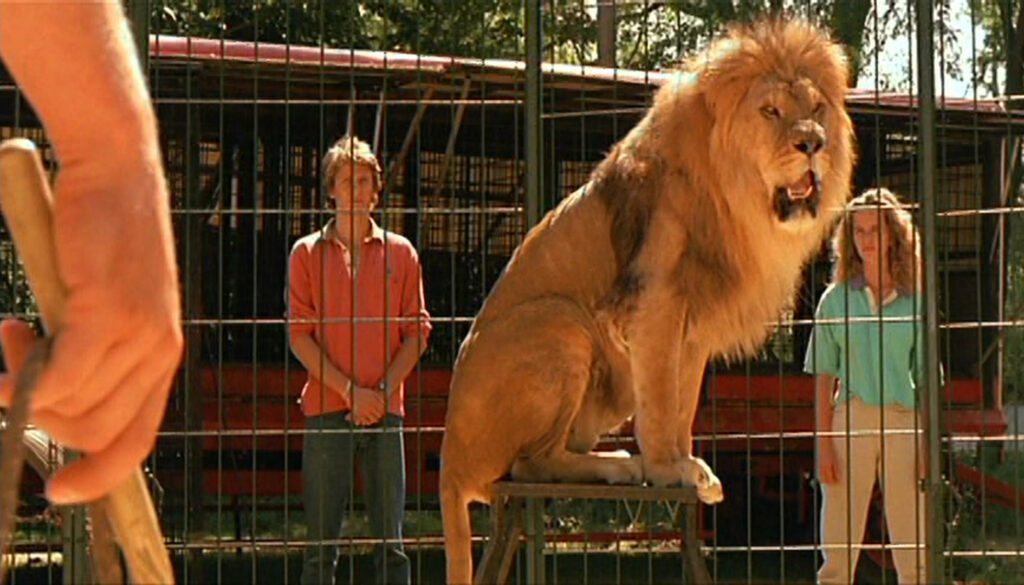
Roselyne and the Lions
1989, directed by Jean-Jacques Beineix
There are enough omens of death in Roselyne and the Lions to foreshadow some terrible accident in the final act. A fortune teller sees death in Roselyne’s future; Thierry and Roselyne get a postcard of a young woman facing a skeleton; Thierry’s nurse tells him, “You look well for a dead man”; and of course there’s Klint’s suicide as well as the omnipresent danger in the lions’ ring. Even Professor Bracquard foretells a bad end when he describes Thierry in the opening scene as “absent” and “non-existent”. It might seem reassuring, therefore, when it turns out that all these signs point to nothing more dire than Thierry’s death outfit, a black and white skeleton suit in a hooded robe meant as a foil to Roselyne’s glamor. However we should not feel reassured. The costume may be symbolic, but it represents a real kind of death that is not a happy outcome for the couple.
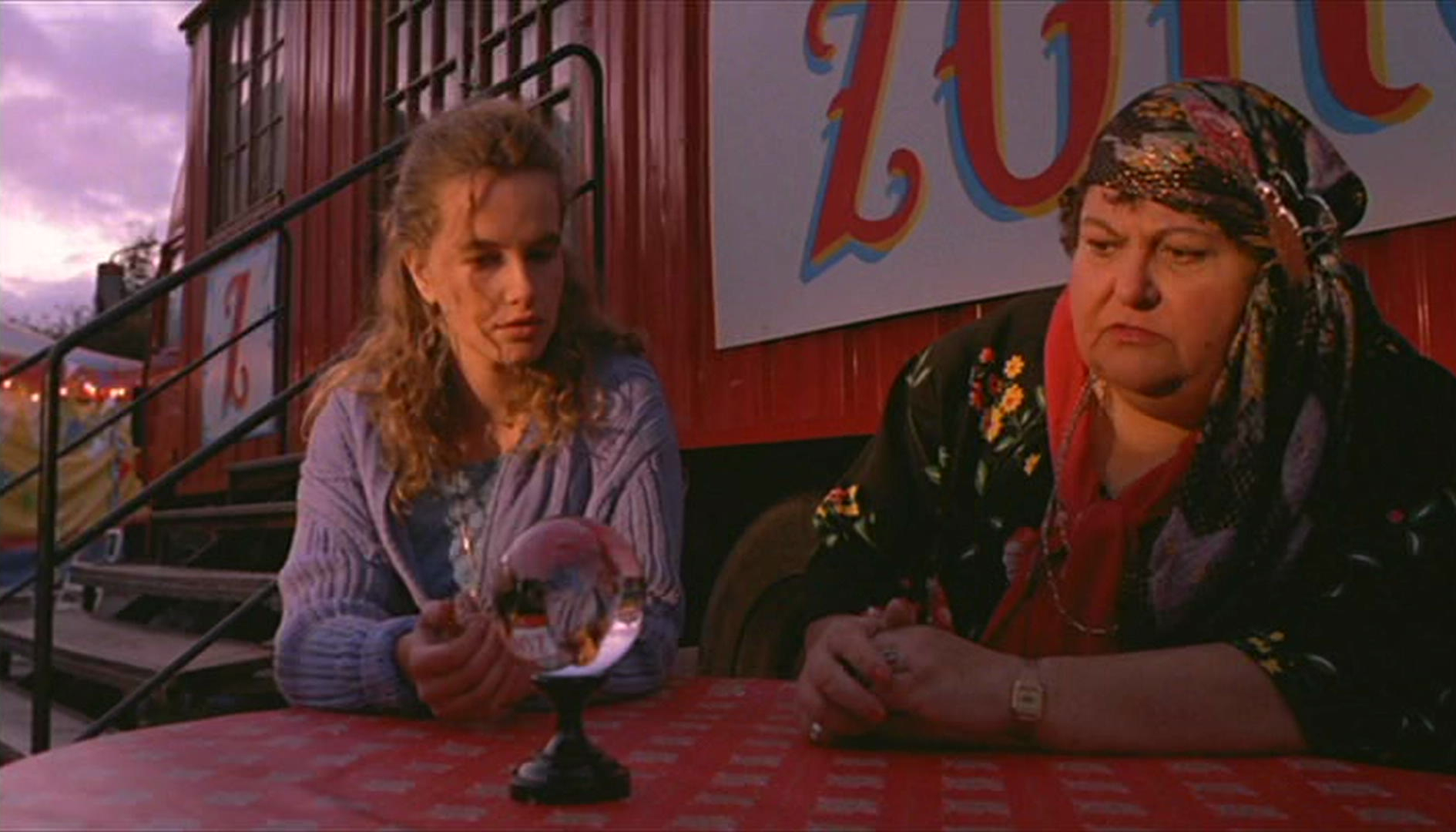
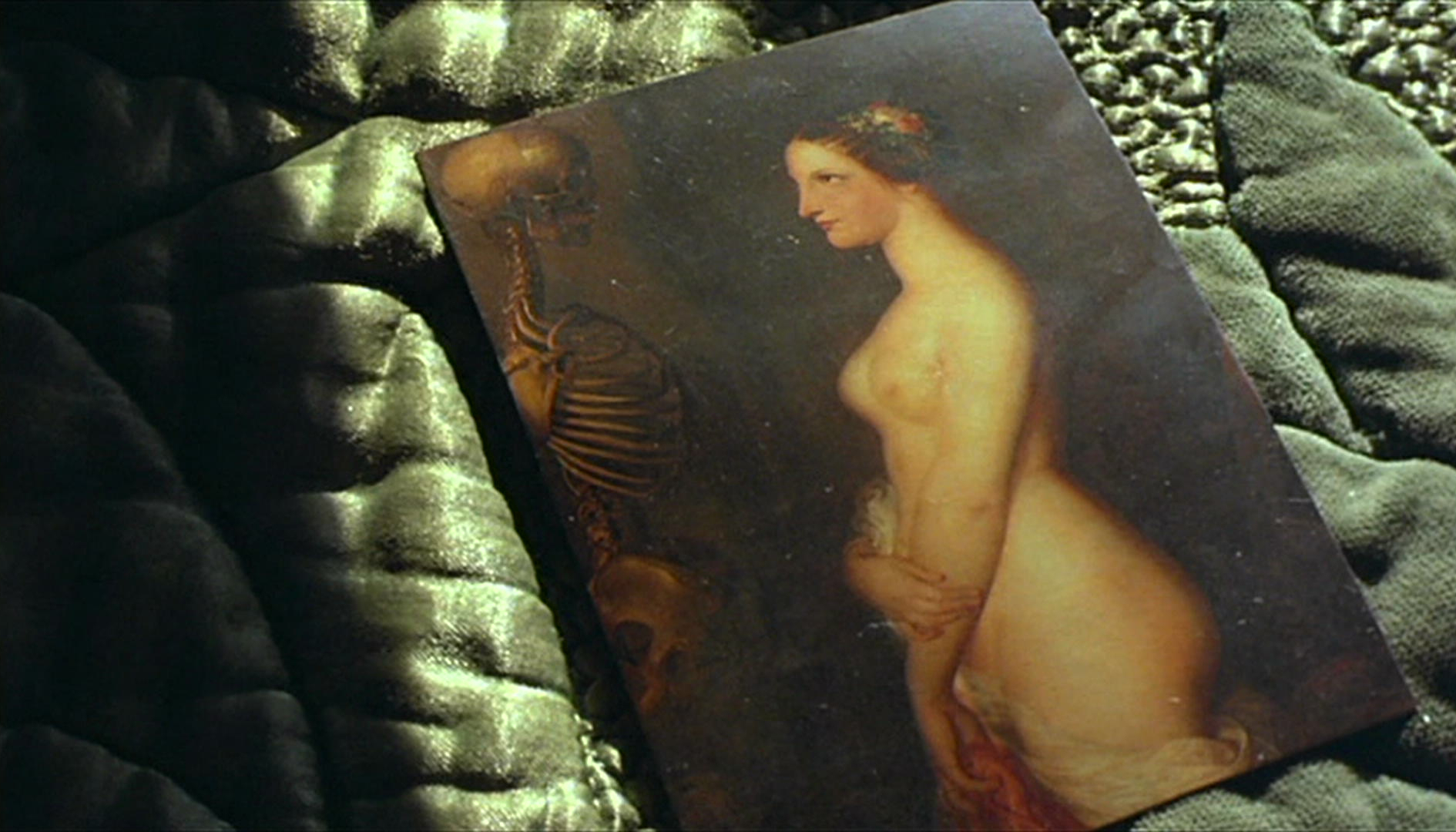
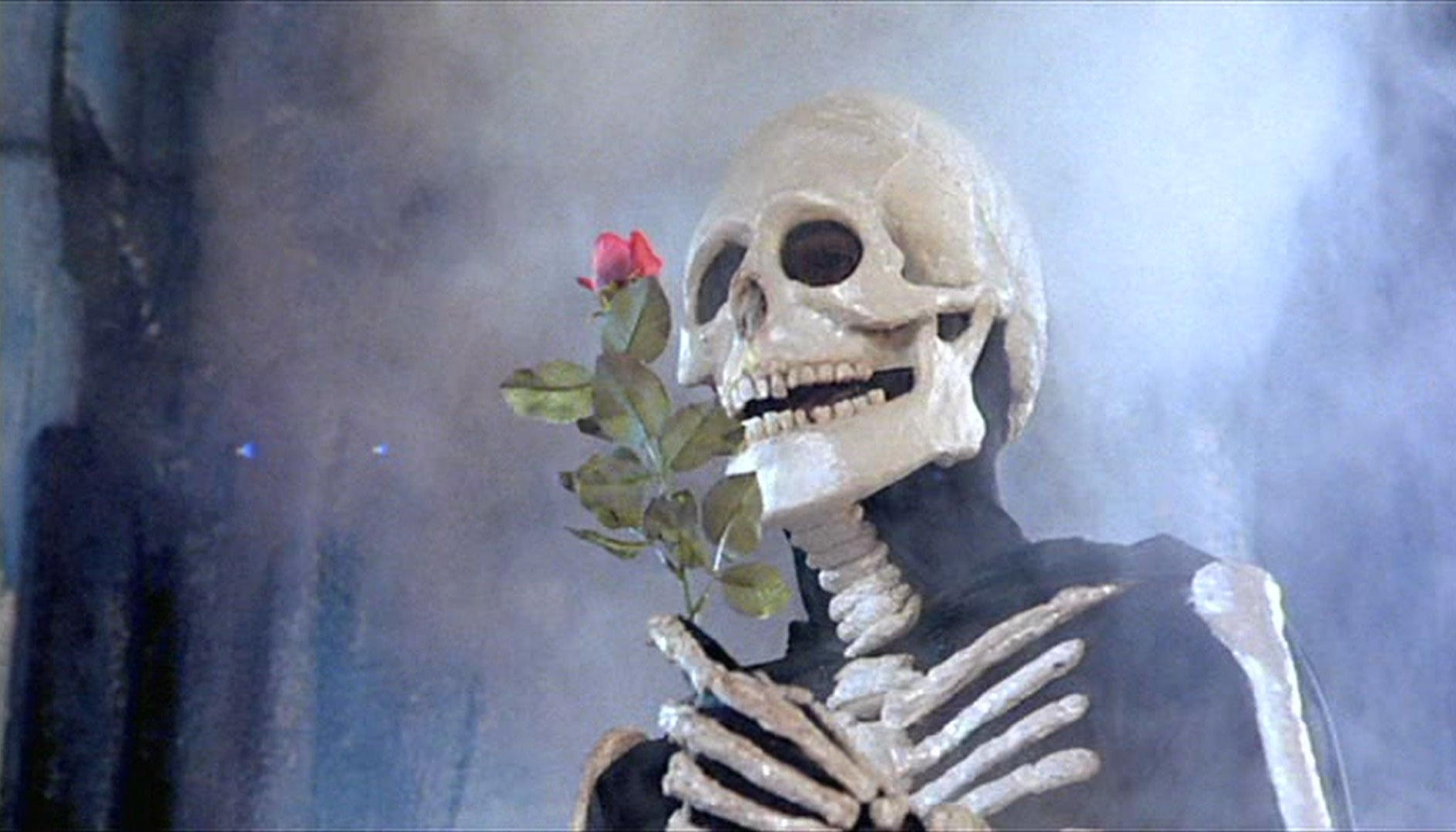
The story of Roselyne and Thierry is a gradual descent into a kind of lifelessness, which many viewers and critics perceive instead as a disappointing payoff to a promising start, with an anticlimactic finale. The movie was never successful, and it’s mostly forgotten today. More than any human characters it’s the lions who bear the brunt of this disappointment. Frazier’s lions at the Marseille Zoo bristle with savage energy, but as the story moves from the Mediterranean sun to gray northern skies and the incandescent lights of the circus, the excitement of the lions steadily diminishes. Markovitch’s beasts look threatening, especially when they’re in heat, but their performance fizzles into the unimpressive motions of a choreographed act. In the climactic performance, not only does Thierry vanish inside his death outfit, but Roselyne too is stripped of life, reduced to a kind of doll in her glimmering bikini. Each one is a different version of lifelessness. It’s almost as if the final scene were deliberately stillborn.
As anyone who has paid close attention to Moon in the Gutter knows, Beineix is not likely to present glamor unquestioningly. It’s not that Roselyne, or Loretta in the earlier film, is corrupted by her glamor; glamor often masks innocence and vulnerability. Beineix is interested rather in what glamor represents to the beholder. In Moon in the Gutter Gérard’s desire to possess Loretta is psychologically regressive, a resurgence of infantile sexuality. In Roselyne and the Lions glamor only makes a brief appearance at the end, and it’s sufficient to question what sort of entertainment the audience derives from it, because it dehumanizes Roselyne. The movie’s focus however is on the gradual process by which the idea of performance is drained of vitality, and we have as much to learn from watching the lions as we do from Roselyne and Thierry.
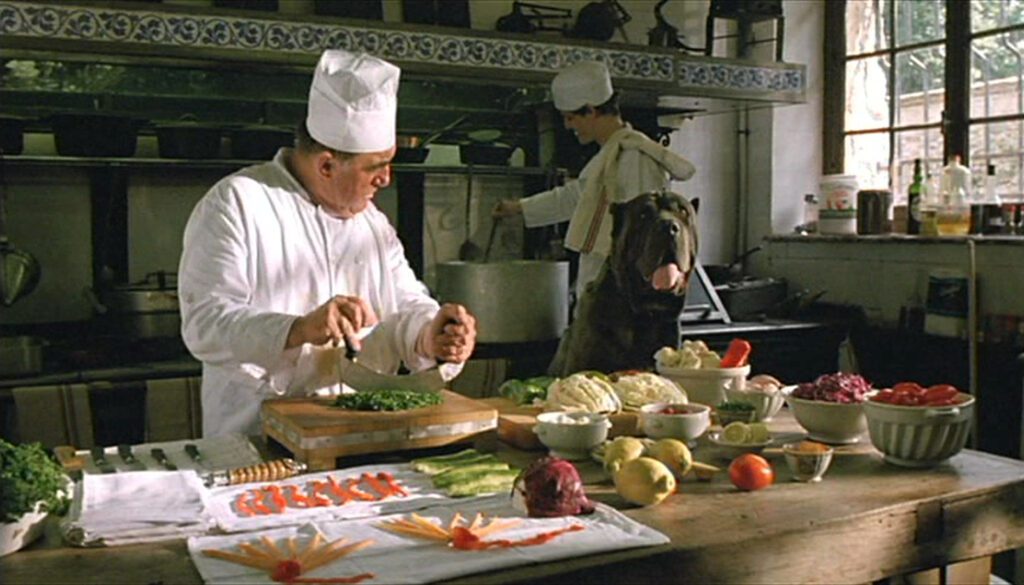
The lions disappoint us precisely because they’ve been so well tamed. Processes of taming are woven throughout the film – the lions, a dog, a cat, the high school students. Roselyne expertly tames a horny newspaper reporter, and even the hospital nurse in Munich gets her turn, taming her disobedient patient Thierry with the same supremacy he holds over the lions. The lion act is a live performance, a stand-in for the arts as a whole, and the movie is about the hazards of excessive control – which applies also to cinema, where the filmmaker’s authority risks squeezing the life out of the material. In an odd way this movie needs the viewer’s disappointment to demonstrate its point. If we judge the closing act at Circus Koenig not for its dramatic value, but as a likeness to so many efforts to make “great art” by means of total mastery of the material at hand, then Roselyne and the Lions becomes a far more appreciable film.
This notion that an artist might “squeeze the life out” of material through excessive control is not necessarily obvious, so before proceeding with the argument in Roselyne it is probably worthwhile to point fingers at a few transgressive examples from the world of film, keeping in mind that there are many ways a filmmaker might tame a film’s subject into lifelessness. It can happen, for example, by rigid application of theoretical principles, a sin Sergei Eisenstein repeats stubbornly, to the extent that his characters become mannequins of the class struggle. It can also happen when a film’s material is enslaved to the strictures of genre or style, or when photographic brilliance becomes the supreme goal, a problem that plagues Orson Welles among many others. It occurs more and more often today when large-budget features are straitjacketed by demands of technical perfection; who can say for instance that a Christopher Nolan film breathes with recognizable humanity? Even a director like Alfred Hitchcock, whose habit of storyboarding could easily sterilize a movie, falls into the trap occasionally, but he permits more roughness in his films than people usually credit him for, and unless he’s working with Cary Grant he usually leaves his characters untamed.
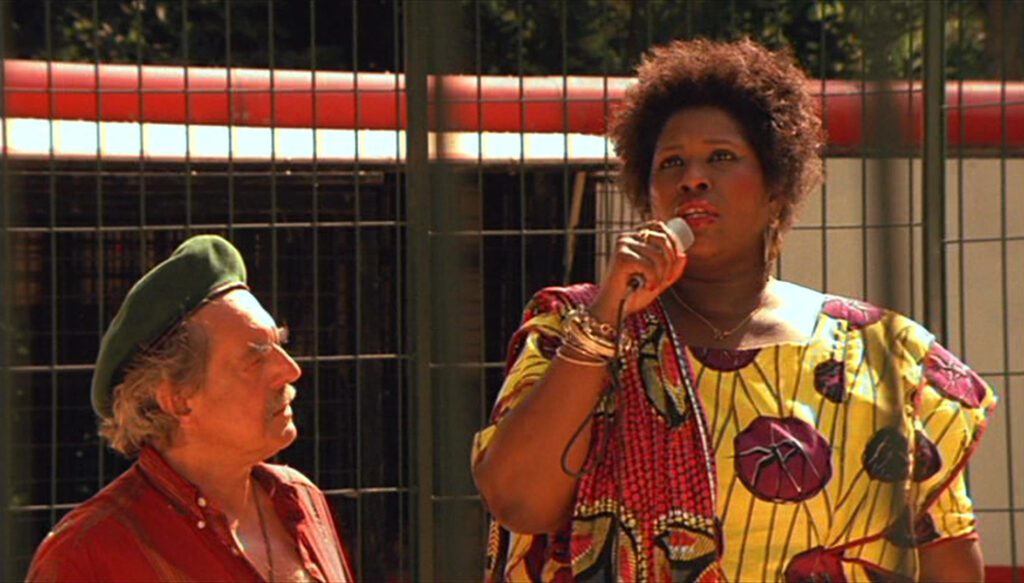
At least until the moment when Frazier catches Roselyne and Thierry kissing in Wotan’s cage, Roselyne and the Lions is a fine example of how to sustain drama without tight control. It’s an exciting love story laced with danger, and the characters are genuinely human, yet it never strains for photographic or narrative perfection.
Bracquard is especially lifelike, embodying a range of contradictions between untamed nature and rigid authority. His boyhood dream to be a motorcycle cop mixes the romance of a rebellious cyclist with the strict command of a policeman. He’s a disciplinarian teacher, yet he admires the free spirit of Percy Bysshe Shelley, and he quotes William Blake. He encourages Thierry and Roselyne on their adventurous quest, yet he is more than satisfied to see the circus lions tamed into docility at the end. If Roselyne and Thierry are artists strangling their material with excessive control, Bracquard is the acquiescent public unsure of what it truly wants.
Thierry’s stage name d’Alembert comes from the mathematician whose formula “tamed” wave motion, making order out of chaos. Roselyne briefly takes the name Blandine after a second-century Christian martyr in Roman-governed Lyon; ironically she will end up martyring the lions for her performance by draining their nature from them. Even the lions’ names point vaguely to the movie’s purpose – the cats in Marseille take their names from their native Africa (Fatou, Yulca, Maoli) or the Norse god of frenzy (Wotan), while two of them in the last half, Romain and Caesar, allude to the Roman Empire, famous for imposing order on the ancient world.
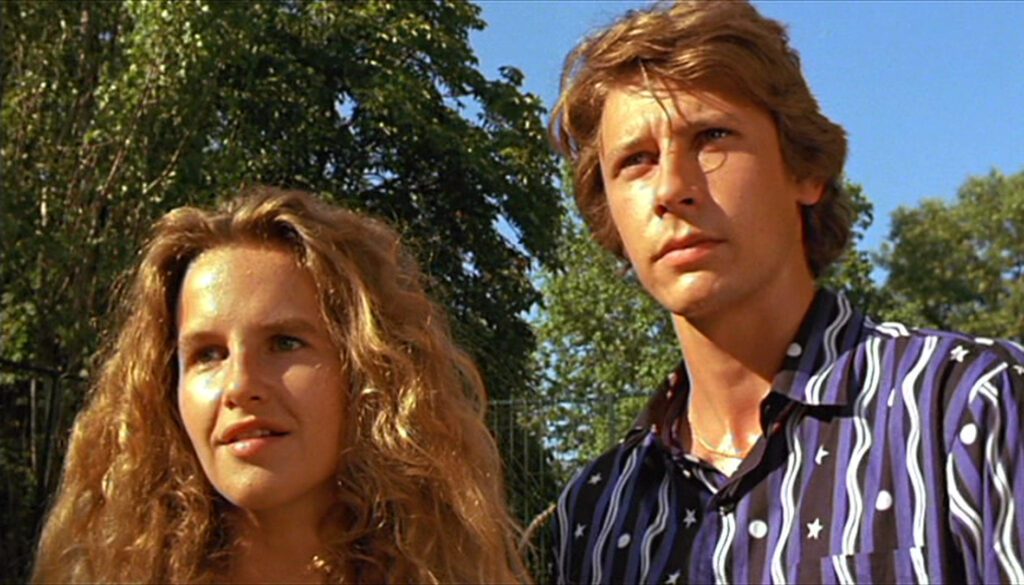
If Roselyne and Thierry had deepened as characters while the lions gradually receded into the background, it would have been a different movie. Certainly the focus does shift to them; for example the feeding scenes at the zoo are showcases for the cats’ ferocity, whereas the corresponding butcher room at the circus only showcases the young tamers’ rising careers and their rivalry with Klint. But their road to success diminishes them as well.
As the all-important last scene is so detached from the rest of the film, it’s remarkable what immediately precedes it, capping off the real action. Bracquard arrives in Munich to witness the couple’s triumph, bringing his house cat Dr. Schmokele to show off his own modest success as a trainer. But the cat doesn’t cooperate, and to save the situation Roselyne forces Dr. Schmokele into a bizarre two-legged dance, making a puppet of the poor animal in imitation of human anatomy. The sequence serves to highlight what’s really going on in the following scene, as the circus act will deplete the lions of their feline nature.
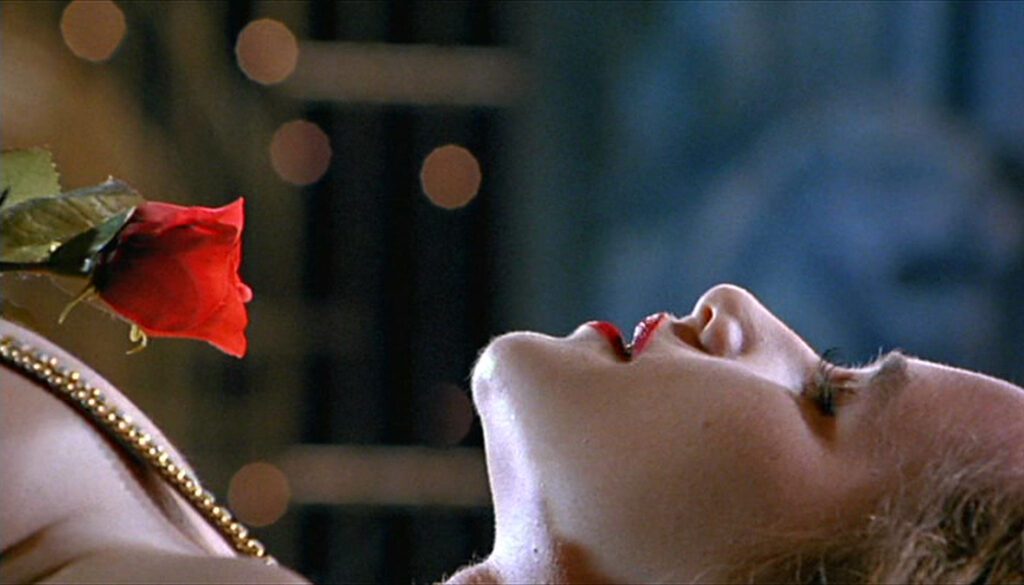
The closing act, then, so anticlimactic for viewers seeking heightened drama, comes alive if we view it as the fitting capstone to an argument so rarely made in film criticism. It says to us, “This is what a film becomes when excessive application of mastery drains its humanity.” The production values exceed everything that precedes it, and the scene is a visual marvel with its ruined cathedral, gargoyles, and artificial fog, but it’s all as forced as Dr. Schmokele’s dance. Just as telling as the show’s inertness, though, is the audience reaction. The Blitz reporter says, “That’s what I call rock!”, a woman next to him declares it “Baroque!”, and Bracquard laments, “If only Dr. Schmokele saw this!” Even if we take these exclamations with a grain of salt, it’s surely no accident that all three are patently false – the lion act is set to synthesized electronic music, the staging is gothic, and we know that any housecat would be bored. These three spectators are typical of critics who are so ready to call lifeless movies “art” and slather them with random adjectives. Herr Koenig, like any enthusiastic producer, notes approvingly that the finale wasn’t in the program. As if echoing the critical praise from the front row, the audience applauds heartily while Roselyne and Thierry soak up the glory, convinced they’ve created something great. It’s not that they meant to be pompous – the problem is that a wish for mastery so often accompanies the desire to create art.
CONNECTIONS:
L’Atalante – Idea that art should express the roughness of life
Vivre sa vie – Correlation between art and lifelessness
Pierrot le fou – Skepticism toward art; viewer’s disappointment enlisted to make a point
The Double Life of Veronique – Caution against an excess of control in artistic creation